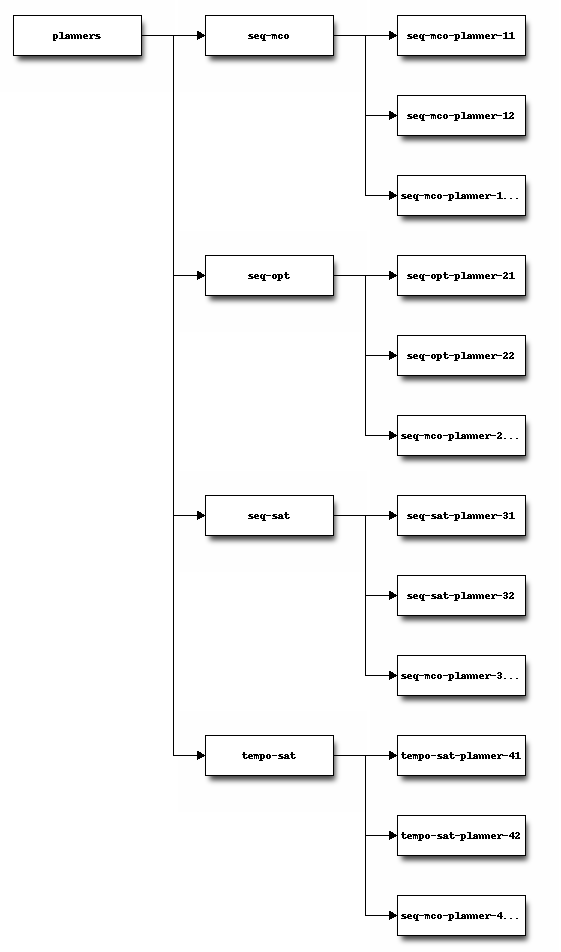Blockdiag (simple diagram images generator)¶
See also
Contents
Introduction¶
Once again thanks a lot for your prompt replies. In case you are curious or you ever have to face the same problem than I, I finally chose blockdiag.
With only a few statements:
.. blockdiag::
{
planners -> seq-mco -> seq-mco-planner-11;
planners -> seq-mco -> seq-mco-planner-12;
planners -> seq-mco -> "seq-mco-planner-1...";
planners -> seq-opt -> seq-opt-planner-21;
planners -> seq-opt -> seq-opt-planner-22;
planners -> seq-opt -> "seq-mco-planner-2...";
planners -> seq-sat -> seq-sat-planner-31;
planners -> seq-sat -> seq-sat-planner-32;
planners -> seq-sat -> "seq-mco-planner-3...";
planners -> tempo-sat -> tempo-sat-planner-41;
planners -> tempo-sat -> tempo-sat-planner-42;
planners -> tempo-sat -> "seq-mco-planner-4...";
}
I could generate the attached figure and embed it in the html and pdf docs generated with sphinx.
Just awesome!!

blockdiag pycon-japan-retrospective¶
Komiya Takeshi showed me his tool called blockdiag, which is a DSL you can use to add diagrams in your documentation. The nice thing is that it provides a Sphinx extension so you can add diagrams in your documentation through simple expressions, and have Sphinx generate for you the diagrams on the fly.
There’s even an interactive online shell: http://interactive.blockdiag.com/
I’ve challenged Komiya to write a few diagrams I have for some Mozilla projects using his tool, and it took a few seconds for him to build them. So, I am going to use this in the future.